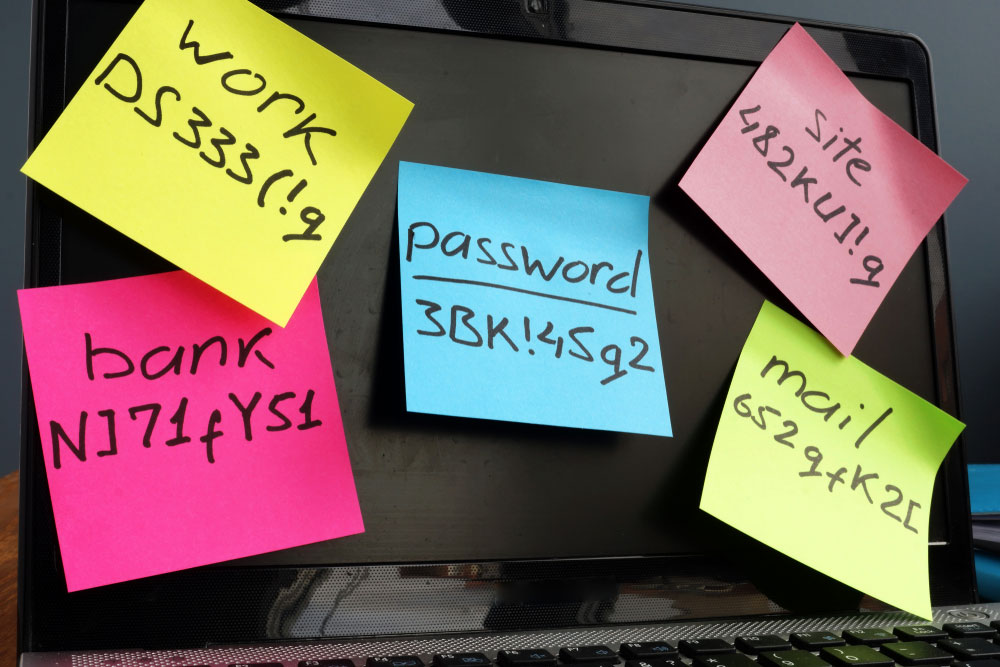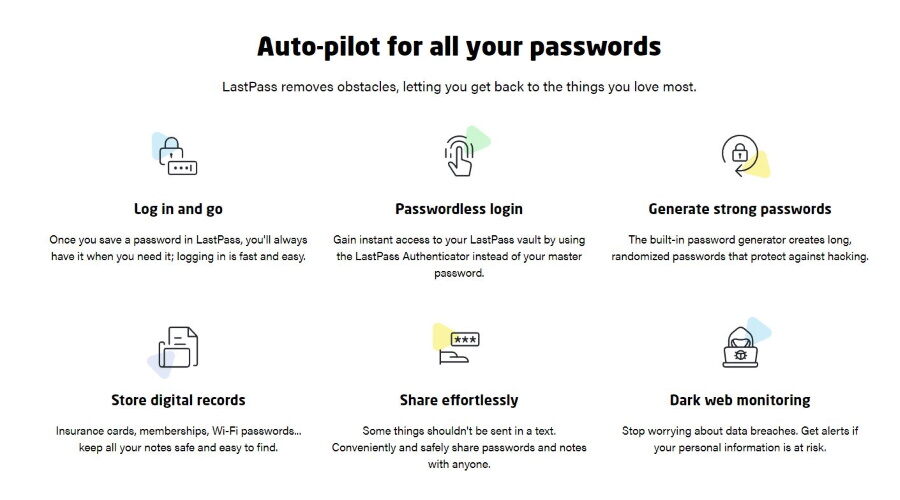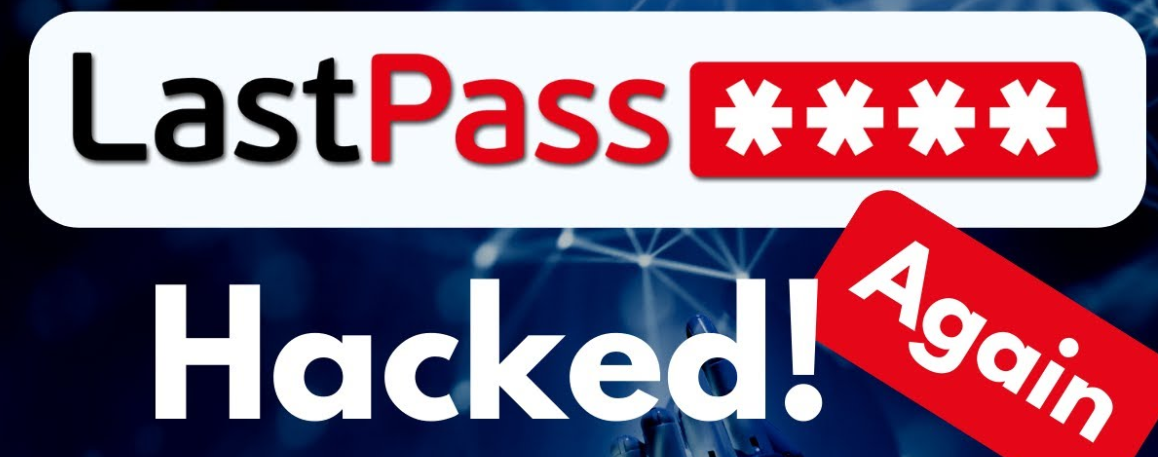Introduction
:format(webp)/cdn.vox-cdn.com/uploads/chorus_asset/file/23262657/VRG_Illo_STK001_B_Sala_Hacker.jpg)
LastPass is a popular password management tool known for its convenience and ability to securely store passwords. The platform has had hacking incidents that raised security concerns. This article takes a deep dive into the vulnerabilities that have made LastPass a target for hackers.
This article focuses on weaknesses in LastPass that allowed hackers to exploit the service and compromise user data, including password encryption, authentication methods, software vulnerabilities, and credential management. Users should understand these issues to make informed decisions about managing their passwords and find other options to reduce the risks related to LastPass.
1. Overview of LastPass

LastPass is a widely used password management tool that allows users to securely store their passwords and other sensitive information. It offers a convenient solution by storing encrypted data on cloud servers, accessible via a master password. LastPass offers browser extensions, mobile apps, and desktop applications, making it accessible across various platforms and devices.
With features like password generation, autofill, and multi-factor authentication, LastPass aims to enhance password security and user convenience. The platform also offers a password-sharing feature for teams and families, streamlining the management of shared accounts.
LastPass has gained popularity due to its user-friendly interface and strong encryption practices, making it a go-to choice for many individuals and organizations seeking to improve their password management practices.
2. Recent hacking incidents and concerns

In recent years, LastPass has experienced several hacking incidents that have raised concerns among its users. These incidents have highlighted the vulnerabilities that exist within the platform’s security framework.
In 2015, LastPass was breached, exposing user email addresses, password reminders, and encrypted master passwords. LastPass said the encryption could stop hackers, but the incident made people worry about the platform’s security.
Lately, there have been phishing attacks targeting LastPass users through fake emails and websites. These incidents have emphasized the importance of user vigilance and education in recognizing and avoiding potential phishing attempts.
These hacking incidents and concerns have made users rethink LastPass’s security and look for other ways to manage their passwords.
Password Encryption
LastPass utilizes a robust encryption protocol to protect user passwords and sensitive data. The platform employs strong encryption algorithms, such as AES-256, to ensure that data stored in the vault is secure. Additionally, LastPass uses a unique encryption key, known as a master password, to encrypt and decrypt user data. This key is never stored on the LastPass servers, and only the user has access to it. LastPass also employs salted hashing techniques to further enhance the security of stored passwords. Despite these encryption measures, vulnerabilities can still exist. If you choose a weak master password or fall victim to a phishing attack, your encrypted data can still be compromised. It is essential for users to adopt strong passwords and remain vigilant in protecting their login credentials.
1. LastPass’s encryption protocol
LastPass employs a stringent encryption protocol to safeguard user passwords and sensitive data. The platform uses strong encryption like AES-256 to keep the user’s information safe in their vault. In addition to this, LastPass utilizes a unique encryption key known as the master password. This key is never stored on LastPass servers and is only accessible to the user. To further enhance security, LastPass uses salted hashing techniques, which add an extra layer of protection to stored passwords. Despite encryption measures, vulnerabilities can still exist, especially if users have weak passwords or fall for phishing attacks. Therefore, it is crucial for users to adopt strong passwords and remain vigilant in safeguarding their login credentials.
2. Weaknesses and vulnerabilities in encryption
While LastPass’s encryption protocol is robust, there are still weaknesses and vulnerabilities that can compromise the security of user data.
- Weak master passwords: Users who choose weak, easily guessable master passwords put their data at risk. Attackers can use various techniques, such as brute force or dictionary attacks, to crack these passwords.
- Phishing attacks: Encryption cannot protect against phishing attacks, where users unknowingly provide their passwords to fraudulent websites. Attackers can then gain access to the user’s LastPass account and decrypt their data.
- Keyloggers and malware: If a user’s device is infected with keyloggers or malware, attackers can intercept the master password and gain access to the encrypted data.
- Insider threats: While LastPass implements strong encryption, there is still a risk of insider threats, where employees with access to the system may intentionally or accidentally leak sensitive data.
To make your LastPass account more secure, choose a strong master password and stay aware of phishing and malware hazards.
Authentication Methods
LastPass offers multiple authentication methods to enhance the security of user accounts. These authentication options provide an additional layer of protection beyond the master password. Users can choose from various methods, including two-factor authentication (2FA) and biometric authentication.
- Two-factor authentication (2FA): LastPass supports 2FA with options such as using an authenticator app, SMS codes, and hardware tokens. Users need to provide an additional piece of information, like a unique code, along with their master password for this method.
- Biometric authentication: LastPass also supports biometric authentication, allowing users to log in using their fingerprint or face recognition. This adds an extra level of security by leveraging unique biological characteristics.
By implementing these authentication methods, LastPass aims to reduce the risk of unauthorized access and enhances the overall security of user data.
1. LastPass’s authentication options

LastPass offers a range of authentication options to enhance the security of user accounts. These options provide an additional layer of protection beyond the master password. A common way to prove your identity is through two-factor authentication (2FA). It asks for a second piece of information along with your main password. LastPass supports various 2FA options, including the use of authenticator apps, SMS codes, and hardware tokens.
In addition to 2FA, LastPass also supports biometric authentication, allowing users to log in using their fingerprint or face recognition. This adds an extra level of security by leveraging unique biological characteristics. By providing these authentication methods, LastPass aims to reduce the risk of unauthorized access and enhance the overall security of user data.
2. Authentication vulnerabilities and exploits
Authentication vulnerabilities and exploits have been a concern for LastPass users. Despite the range of authentication options available, there have been instances where these methods have been exploited. Some of the common vulnerabilities include:
- Phishing attacks: Hackers may trick users into providing their authentication information through deceptive emails or websites, bypassing the authentication process altogether.
- Social engineering: Attackers may manipulate users into divulging their authentication credentials by posing as legitimate entities or using psychological manipulation techniques.
- SIM swapping: In the case of SMS-based authentication, attackers can exploit vulnerabilities in cellular networks to redirect SMS codes to their own devices, allowing them to gain unauthorized access.
- Keyloggers and malware: If a user’s device is infected with keyloggers or malware, it can capture authentication information, compromising the security of LastPass accounts.
Users must stay alert, follow safe browsing practices, and regularly update their devices and installed apps to mitigate these risks. Additionally, LastPass should continuously enhance its security measures to address and mitigate the potential vulnerabilities associated with authentication methods.
Software Vulnerabilities
LastPass has faced various software vulnerabilities over the years, which have resulted in security breaches and compromises. These vulnerabilities include flaws in the codebase, programming errors, and inadequate security measures within the LastPass software. Hackers can exploit these weaknesses to gain unauthorized access to user accounts, exposing sensitive information.
Software vulnerabilities can come from things like weak encryption, wrong input checks, unsafe API connections, or not enough protection against malware and keyloggers. These vulnerabilities put the stored passwords and personal data of LastPass users at risk.
LastPass should prioritize regularly updating and patching its software to address these vulnerabilities promptly. The company must do thorough security testing and code review to find and fix any weaknesses. Additionally, LastPass should implement comprehensive security measures to protect against emerging threats and ensure continuous improvement of its software’s security.
1. LastPass’s software vulnerabilities
LastPass, despite being a widely used password manager, has unfortunately been vulnerable to several software vulnerabilities. These vulnerabilities have exposed users to potential security breaches and compromises. Weaknesses in LastPass’s codebase, programming errors, and inadequate security measures have all contributed to these vulnerabilities.
Hackers can exploit these weaknesses to gain unauthorized access to user accounts and access sensitive information. LastPass has vulnerabilities like weak encryption, improper input validation, insecure API integrations, and inadequate protection against malware and keyloggers.
To address these vulnerabilities, LastPass must prioritize regular software updates and patches. Additionally, conducting thorough security testing and code review processes is crucial to identifying and rectifying any potential weaknesses. LastPass must implement strong security measures to protect against new threats and keep improving its software’s security.
2. Exploits and breaches due to software weaknesses

Exploits and breaches resulting from software weaknesses in LastPass have exposed users to significant security risks. Attackers have been able to take advantage of vulnerabilities in LastPass’s codebase and programming errors to gain unauthorized access to user accounts and compromise sensitive information. These weaknesses have allowed hackers to bypass weak encryption implementations, exploit improper input validation, and exploit insecure API integrations. Inadequate protection against malware and keyloggers has also facilitated successful attacks. As a result, users’ passwords and other sensitive data have been compromised, leading to potential identity theft and unauthorized access to personal accounts. To safeguard against these exploits and breaches, LastPass must prioritize regular software updates, conduct thorough security testing and code review processes, and implement comprehensive security measures.
Credential Management
Credential Management:
Credential management refers to how LastPass handles user credentials, such as passwords, login information, and personal data. LastPass offers a secure vault where users can store and manage their credentials. However, several breaches and leaks have raised concerns about the effectiveness of LastPass’s credential management.
LastPass has faced incidents where user credentials were compromised due to vulnerabilities in its system. These vulnerabilities allowed attackers to access and steal user passwords and other sensitive information. While LastPass implements encryption to protect user credentials, weaknesses in their encryption protocol have allowed hackers to bypass security measures.
To address these issues, LastPass should prioritize improving their credential management systems. This includes implementing strong encryption algorithms, regularly updating and patching vulnerabilities, and conducting thorough security audits. Users should also consider alternative password management solutions that prioritize security and have a track record of successfully handling user credentials.
1. LastPass’s handling of user credentials

LastPass takes user credentials seriously and offers a secure vault for users to store and manage their sensitive information. Users can securely save and autofill passwords, login details, and personal data. The vault is protected by strong encryption algorithms, ensuring that only the user has access to their stored credentials. Additionally, LastPass offers features such as two-factor authentication and biometric authentication options to further enhance security. LastPass had incidents where user information was compromised, but they are working to fix the problems and improve security. However, it is still important for users to regularly update their passwords and be cautious about the security of their credentials.
2. Breaches and leaks related to credential management

In recent years, LastPass has also faced several incidents involving breaches and leaks related to credential management. These incidents have raised concerns about the level of security and protection of user credentials within the LastPass system.
Notable incidents include the 2015 breach where LastPass detected unauthorized access to user email addresses, password reminders, and encrypted master passwords. However, no decrypted passwords or user vault data were compromised.
In 2017, a security researcher found a problem in the LastPass browser extension that could let someone get people’s login information. LastPass quickly addressed the issue and released a fix to prevent any potential exploitation.
While LastPass has taken steps to enhance its security measures and respond to these breaches and leaks promptly, it is crucial for users to remain vigilant and regularly update their passwords to minimize the risk of unauthorized access to their stored credentials.
Conclusion and Recommendations

LastPass’s frequent hacking incidents have shown weaknesses in its password encryption, authentication methods, software, and credential management. While LastPass has made efforts to address these concerns, users must remain proactive in protecting their accounts and credentials. It is recommended to follow these steps to mitigate risks:
- Update passwords regularly: Changing passwords frequently reduces the chance of compromised credentials.
- Enable multi-factor authentication (MFA): MFA provides an additional layer of security by requiring users to verify their identity through multiple methods.
- Choose strong, unique passwords: Using long, complex passwords or using a password manager to generate and store unique passwords for each account is crucial.
- Monitor for suspicious activity: Regularly review account activity and subscribe to alerts for any unauthorized access.
- Consider alternative password managers: Explore other reputable password management options that offer robust security measures to suit individual needs.
By implementing these measures, users can enhance the security of their online accounts and better protect their sensitive information.
1. Summary of LastPass’s vulnerabilities

LastPass has been plagued by multiple hacking incidents in recent years, showcasing vulnerabilities in several key areas. The encryption protocol used by LastPass has been found to have weaknesses, making it susceptible to attacks. Additionally, the authentication methods offered by LastPass have also been targeted, with vulnerabilities and exploits discovered. Furthermore, LastPass’s software has had its fair share of vulnerabilities, leading to breaches and compromises. Lastly, the management of user credentials by LastPass has faced security issues, resulting in credential leaks and potential unauthorized access. Users should take steps to protect their accounts and consider using password management options with stronger security measures.
2. Possible steps to mitigate risks and alternatives to consider

In order to mitigate the risks associated with LastPass’s vulnerabilities, users can consider taking the following steps:
- Enable two-factor authentication (2FA): Utilize an additional layer of security by enabling 2FA, which requires users to provide a second form of verification, such as a code sent to a mobile device.
- Regularly update and patch software: Keep LastPass and other related software up to date to ensure any known vulnerabilities are patched promptly.
- Use strong and unique passwords: Create complex passwords for your LastPass account and all other online accounts. Avoid reusing passwords across multiple platforms to minimize the impact of a potential breach.
- Regularly monitor and review account activity: Stay vigilant by monitoring your LastPass account for any suspicious activity and review the access history regularly.
As alternatives to LastPass, users can explore other reputable password management solutions such as Dashlane, 1Password, or Bitwarden. These alternatives offer similar features but may have different security measures in place.




